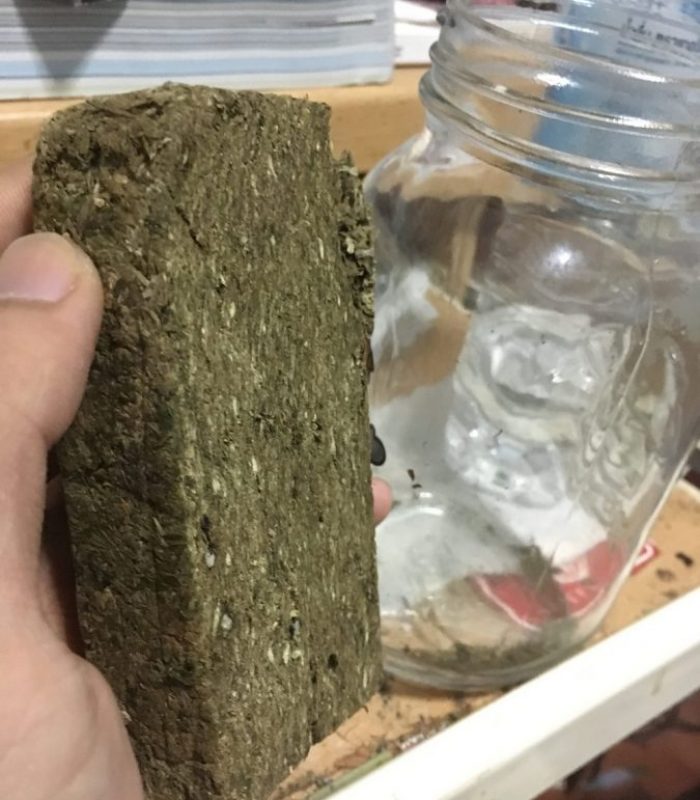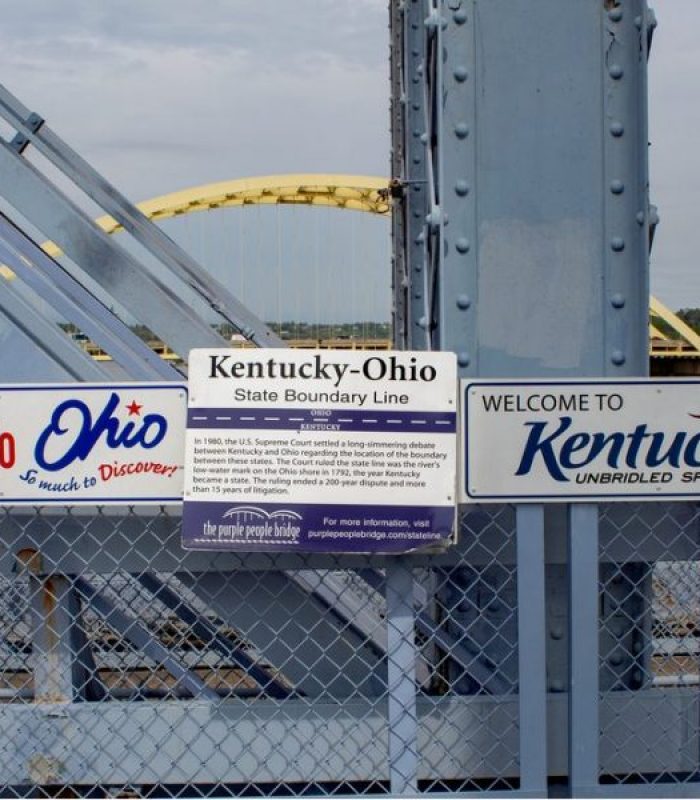Can the government appease science’s demand for quality cannabis by increasing production?
The U.S. government is planning its largest research crop of cannabis in five years. The bumper crop will come from the University of Mississippi, the only facility the federal government allows to produce cannabis for research purposes.
This year, the National Institute on Drug Abuse plans to grow 2,000kg – or 4,409 lbs – of cannabis at the University of Mississippi location.
The research crop will include both high THC and CBD-rich strains, following demands by researchers for cannabis that more closely matches that available in legal states.
Recently, many scientists have complained about the quality of cannabis the government uses for research. Some researchers have even applied to grow their own crop. They’re technically allowed to, under a Drug Enforcement Agency program instituted in 2015. However, the DEA and Attorney General have not yet officially acknowledged any applications.
The situation has led to some scientists at the Scottsdale Research Institute to file a suit against the DEA and Attorney General to force a response.
Researchers hoping to get their hands on the latest research crop will have to wait until the fall, after the NIDA has a chance to harvest and analyze the cannabis. And while the University of Mississippi research crop will be the government’s largest in five years, the feds don’t even come close to the world’s biggest cannabis producers. Read on for a rundown of the world’s largest cannabis grows.
U.S. Home to World’s Largest Legal Cannabis Farm
The LA Times reports that Santa Barbara County, California will soon be home to Earth’s largest legal cannabis farm. The operation will span 147 acres – about the size of 130 football fields.
Just over the Santa Ynez river, another farm is busy planting what the LA Times calls the world’s “second-biggest grow, at 83 acres.”
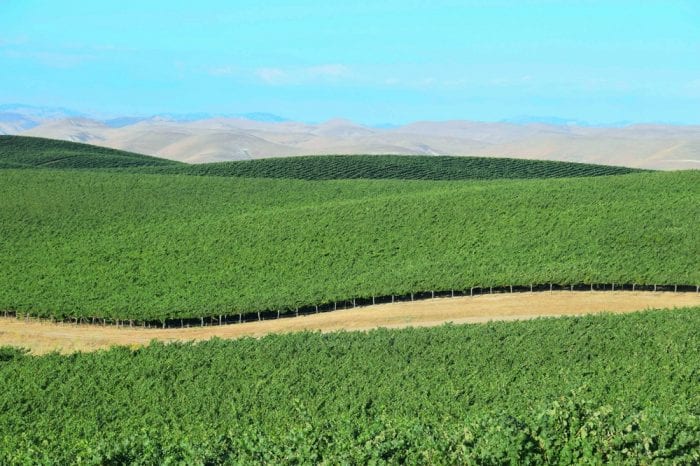
Grapes in Santa Barbara County, California
Santa Barbara County is attracting cannabis industry giants because of favorable business conditions. The country does not limit the size or number of grows, nor does it inspect grow sites or vet license applications. Add to that, a favorable tax regiment based on gross revenue rather than square footage.
Soon, a region better known for wine isblooming with cannabis. This year, Santa Barbara County farms hold 35% of all cannabis grow licenses in California. That’s even more than California’s traditional cannabis center, Humboldt County.
The county welcomes the cannabis industry with open arms. Still, the same can’t be said for its residents or existing agricultural industry. Residents complain that the scent of cannabis “permeates everything,” and wine producers have found that the smell proves overwhelming in their tasting rooms.
Meanwhile, avocado producers worry they may inadvertently contaminate cannabis crops when spraying their fruit. Farmers are concerned that this could land them with hefty compensation bills for damaged cannabis. It must be destroyed if inspections find even tiny amounts of pesticides.
Canada’s Largest Cannabis Farm
Santa Barbara County holds the top spot for largest cannabis grows – for now, but California may soon have some competition from across the continent – in Ontario, Canada.
Cannabis producer, 48North, is in the process of starting up a 100 acre grow in Brant County, Ontario. The company expects to grow 250,000 plants at this facility alone.
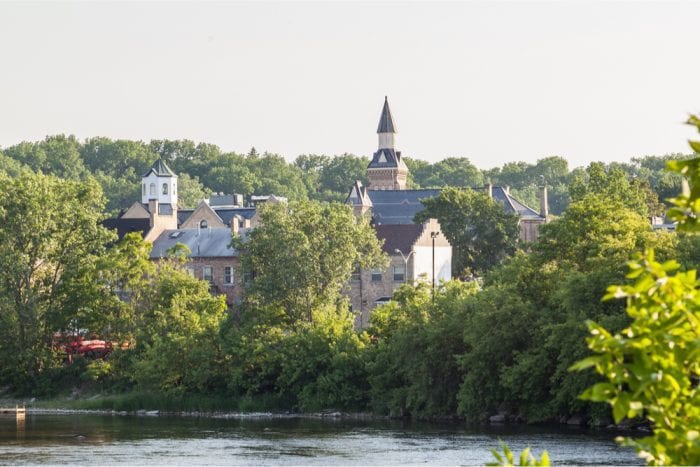
Paris, in Ontario’s Brant County
The producer says that outdoor production is advantageous due to low costs. And, further, that cannabis thrives in Brant County due to top-quality soil in what was previously known as tobacco country.
The company plans to install fencing, motion detectors, and a network of 100 surveillance cameras to protect their valuable crop.
The facility will provide jobs for 200 seasonal workers and 50 full-time staff.
48North co-CEO Jeannette Vandermarel predicts that their operation will be “a game changer for the industry,” and that “outdoor cultivation will be the norm.”
Britain’s Largest Cannabis Farm
While the UK legalized medical last year, recreational cannabis remains illegal. Nonetheless, last year, the UN reported that Britain is the world’s largest producer of legal cannabis, as well as the world’s largest medical cannabis exporter.
The situation led to the late opposition MP Paul Flynn to criticize the “breathtaking hypocrisy” of the UK government who, he said, “declare in law that cannabis has no medicinal value, whilst simultaneously accounting for nearly half the world’s medical and scientific supply.”
GW Pharmaceuticals drives most of this supply. This pharma company is the producer of the cannabis-based drugs, Sativex and Epidiolex. So, it’s no coincidence that the company is also connected to the UK’s largest cannabis farm, near Downham Market in Norfolk.
The 45-acre facility operates under British Sugar, under further contract with GW. It supplies a research crop as well as raw material for producing GW’s market-leading products. The grow provoked a local mystery in 2017 when residents became aware of a skunky scent permeating the country air.
Morocco in the Cannabis Game
While California, Canada, and Britain represent some of the largest legal cannabis producers in the world, Morocco’s Rif region surely takes the top spot. The region’s cannabis farms total an estimated 123,000 acres.
However, Rif’s farms don’t belong to any one producer. Instead, small-scale farmers work the land. About 90% of these are illegally growing on public land, according to local environmental groups.
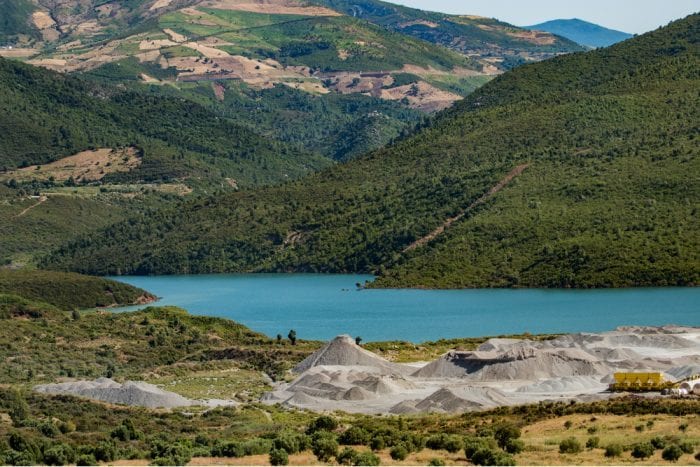
Rif, Morocco
Much of the crop will go to Europe. Eighty percent of Europe’s annual hashish consumption arrives via the small Spanish coastal town of La Línea de la Concepción.
One Spanish police officer estimates that smugglers move around 2,000 kg of hash through the town. This happens seven times each night, twenty nights per month. That would add up to a mind-boggling 3,360,000 kg – or 7,400,000 lbs each year.
In the end, there is no doubt that cannabis grows are big business around the world.




